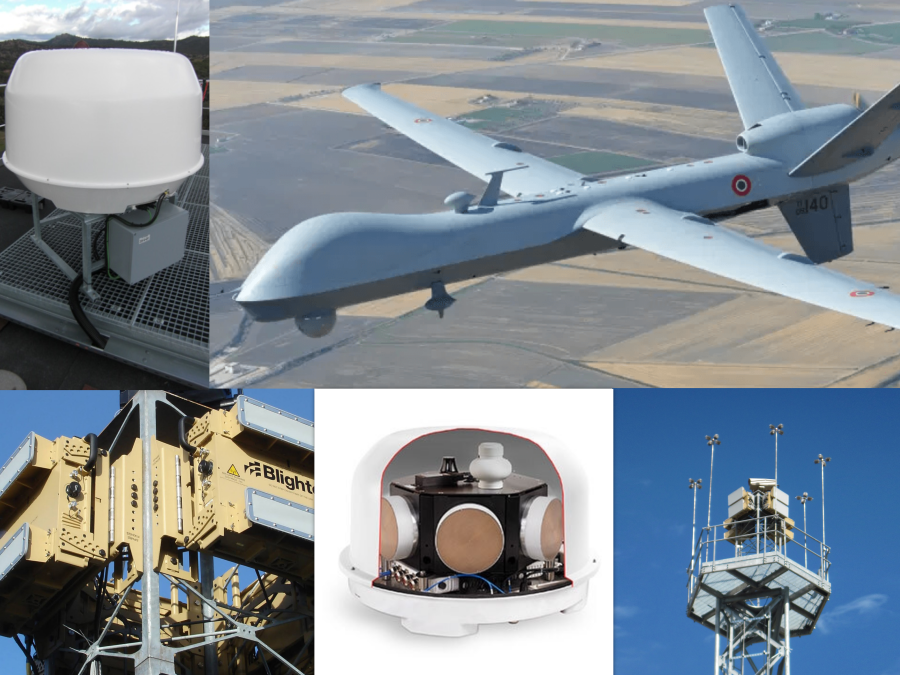Wideband Radio Monitoring Module
The innovation of the RFeye Array can scan the radio frequency range from 10MHz to 18GHz with twin receiver channels. An array of antennas used by this system is used to perform signal analysis, and classification of signals to geolocate the transmitters. These kinds of devices are mostly used in surveillance systems and spectrum monitoring 24/7 in the defense sector. This will use the Angle of Arrival (AoA) technique to identify the geolocation of unauthorized signals and suspicious transmission of signals between unauthorized persons. This is monitored in real-time and for future analysis.
Introduction to the spectrum monitoring system
Energy is emitted by different sources as electromagnetic energy from large wavelength radio waves to shorter wavelength gamma rays. RF fields have many applications like mobile phones, the medical field, defense, and home appliances use radio frequencies ranging from 100 kHz to 300 GHz. This article is focused on spectrum monitoring or radio frequency monitoring, in which radar was most widely used in the olden days in defense to detect objects in space. The word RADAR coined from radio detection and ranging, uses radio waves to determine the distance and velocity of the object they hit. The radar transmits a focused pulse of microwave signal at an object like fighter aircraft, missiles, clouds, underground utilities, etc., to alert the security system of the nation, weather forecast to protect the people from natural calamities, and to identify the natural resources, etc., respectively. In modern days unmanned aerial vehicles (UAVs) or drones, can be automated drones or remotely piloted vehicles (RPVs). The first pilotless vehicle was developed in Britain and the USA during the First World War and was first tested in March 1917, while the American aerial torpedo known as the “Kettering Bug” first flew, in October 1918. At present, most advanced modern UAVs are not detected by radars but are used in the defense sector for surveillance.
Spectrum Management and Monitoring
RF spectrum is a finite resource used in defense and civil applications. Spectrum utilization worldwide is regulated by the International Telecommunication Union (ITU), located in Geneva, Switzerland. In India, it is regulated by the Telecom Regulation Authority of India (TRAI). To ensure proper utilization of spectrum, spectrum monitoring is done to ensure, where and when they are using it, and what they are using it for. Any breach of utilization can then be spotted, and protected from unauthorized users. For efficient real-time monitoring and management of the RF spectrum, efficient hardware and software. Spectrum monitoring tools scan the RF spectrum, and when an anomaly is found from an unauthorized location, the spectrum manager can be instantly alerted. In defense application, it identifies the geolocation of the transmitter, with armed information, in addition to that, its frequency, power, and time remaining to take steps will be displayed instantly.
Military Spectrum Management and Real-time Monitoring
Frequencies may be allocated, to military bases for a specific purpose. Spectrum manager, then reallocate spectrum to another specific mission or unit. For example, to test a device, a certain frequency for a limited time period may be allocated, in a particular location. Spectrum managers can not only monitor, the use of the spectrum but alert the test transmission running over the time slot. On a battlefield, a multitude of electronic hardware produces a variety of RF spectrum emissions, both on the ground and in the air. These emissions are to be carefully monitored and managed for both safety and ongoing test analysis. Further to resolve any interference issues due to growth in spectrum sharing, which often requires military users to carry out spectrum deconfliction with commercial users of the same frequency bands. RFeye system uses a network of sensitive radio receivers which allows the spectrum manager to continuously and autonomously, monitor and manage from a centralized control point. If the transmitter is transmitting beyond the boundary, then it can be visualized and alerted in real time. A “super network” can be formed by connecting individual RFeye networks that can communicate thousands of miles, to perform ultra-wide area monitoring and geolocations. This can be used to track aircraft, ballistic missile tracking, etc.,
Technology Implementation
Geolocation identification is to locate the transmission source in a 2D or 3D form. There are several techniques to locate the transmission identification as follows
- Time Difference of Arrival (TDOA)
- Power on Arrival (POA)
- Angle of Arrival (AOA)
All these techniques have their own advantages and disadvantages, RFeye uses all these three techniques, based on the application. TDOA uses a minimum of three receivers to determine the difference in arrival of time to geolocate a transmitter. This is well suited for pulsed transmission and it is insensitive to multipath fading. If two receivers are used, it shows geolocation in two dimensions, but if three or more receivers are used, it predicts geolocation in a bounded area or point. RFeye software will map the real-time angle of arrival vectors from antennas onto map interfaces, which gives multiple, simultaneous geolocation visualization in map, to be performed on multiple target frequencies. This helps to visualize the geolocation transmitter points and track of signal source in real time.
Conclusion
RFeye module is used to scan wide band frequencies using AOA, POA, and TDOA techniques to identify the geolocation of the source of the transmitter and track the unauthorized users or objects in real time. Using this module and software, multiple targets can be detected in real-time, which is used in the battlefield, national border security, military spectrum management, air defense, and drone detection to plan counter-attacks within the time limitation in real-time.
Source
- https://www.shoghicom.com/radio-monitoring-signal.php
- https://www.noaa.gov/jetstream/doppler/how-radar-works
- https://www.iwm.org.uk/history/a-brief-history-of-drones
- https://www.anritsu.com/en-us/test-measurement/technologies/remote-spectrum-monitoring
- https://d347awuzx0kdse.cloudfront.net/vicomaus/content-file/crfs-md00033-c04-rfeye-arrays.pdf?v=78f34ece220b06401ac5ee45b29f8b94e0cdf327
- https://www.bitsathy.ac.in/seeing-the-world-in-full-spectrum-the-vertical-color-sensor/

